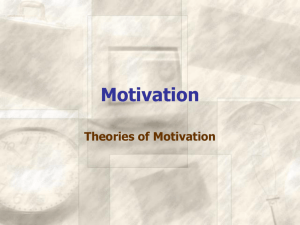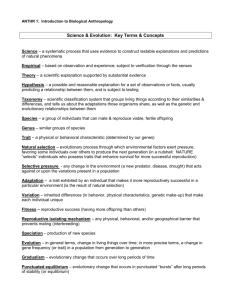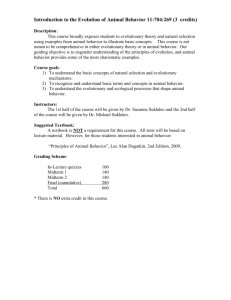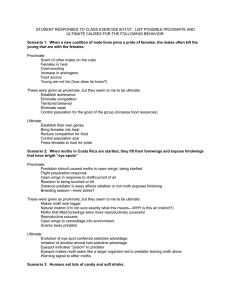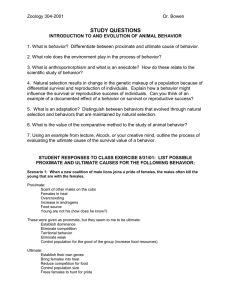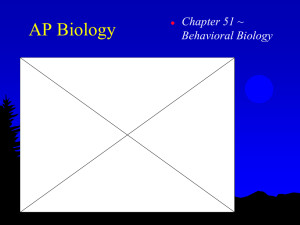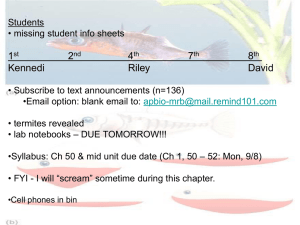Natural Selection, Evolution, and Ecology
advertisement
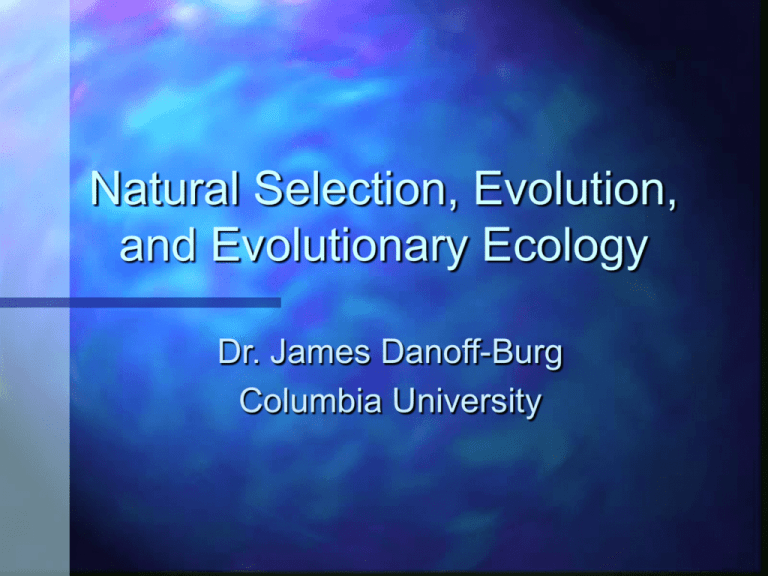
Natural Selection, Evolution, and Evolutionary Ecology Dr. James Danoff-Burg Columbia University Levels of Ecological Explanation Ultimate – Evolutionary influences Proximate – Human influences – Abiotic changes – Biotic interactions Most ecologists explore the last three levels Progress of Ecological Inquiry? Explore If If plausible ultimate answers one is supported, stop no ultimate answers are supported, explore proximate answers Rationale Need to pitch the question at the right level Example – Why are Penguins only in the Southern Hemisphere? – Proximate - insufficient food, too many predators, lack of shelter, etc. – Ultimate - historical and thus evolutionary distribution --> favored at present Two EvolEcol Branches Intraspecific – Relative selective value of different traits – Origin of intraspecific diversity Interspecific – Behavioral ecology (comparative studies) – Systematics and phylogeny Common feature of all branches - Evolution! Evolution Change through time within a lineage Mechanisms / Producers of Variation – Genetic drift – Phenotypic plasticity – Natural Selection Natural Selection Evolution Natural Selection Proposed by Darwin and Wallace Evolutionary mechanism One way that variation exists and is maintained in a population Value is relative to local competitors Only a negative action – Only selection AGAINST a form of a trait – Never selection for a trait Intraspecific Variation Possible sources: – Genetic drift – Phenotypic plasticity – Natural Selection How to differentiate between them? – Genetic fixation / continuity through lineages – Use traits that do not change in response to changes in environment Today’s Activity How do changes in a resource gradient affect intraspecific diversity? – Are these changes due to natural selection? Choose an organism with the following characteristics: – – – – Low vagility Does not disperse aerially Clearly marked adult stage Traits under study do not change Activity Tasks Plan activity Collect data and enter into eBiome Analyze our data Wait for data from other sites Jointly analyze all data Make conclusions about relationship Posit future studies to distinguish between evolutionary mechanisms Planning - To be Determined: Environmental variable Experimental organism Organismal trait for study Statistical technique to use, justify
